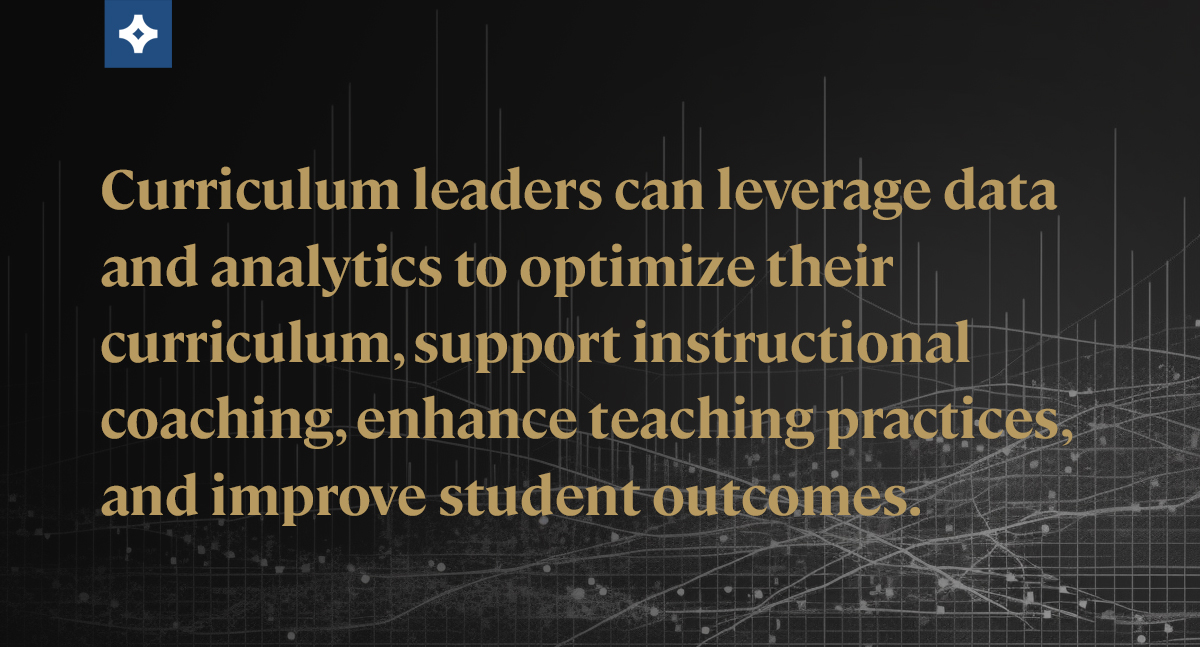As a curriculum leader in a school district, your role is crucial to ensuring the success of students. One of the most effective ways to achieve success is by understanding how the use of data and analytics has the potential to impact school improvement efforts. Whether you are a district level assistant superintendent or a building leader, incorporating data-driven decision making in your process creates a more effective and growth oriented educational system that drives student achievement and success.
In this post, we will discuss how curriculum leaders can leverage K12 data and analytics to optimize their curriculum, support instructional coaching, enhance teaching practices, and improve student outcomes. We will explore the best strategies and tools for collecting, analyzing, and interpreting data, as well as provide relevant examples, case studies, and social proofs.

What is the difference between data and analytics?
To get started, it’s essential to understand what K12 data and analytics are and how they can benefit your school district. Data refers to the information collected within the K12 education system, including student demographic information, academic performance, teacher evaluations, and so much more. Analytics involves analyzing this data to gain insights that can inform decision making and processes.
Data and analytics are closely related and often used together. Data is the raw material that analytics processes to extract insights. Without data, analytics would not be possible. And without analytics, data would be of little use. Together, data and analytics have the potential to provide valuable insights that help school district leaders make better decisions and improve student outcomes.
How can curriculum leaders utilize data and analytics?
One of the best ways to utilize data and analytics is by measuring Academic Return on Investment (ROI). By tracking the progress of students and analyzing the effectiveness of various educational programs, a school district leader can make data-driven decisions that improve student outcomes. For instance, if you notice that a particular program or intervention is not yielding the desired results, you can modify it or replace it with a more effective one.
Another effective strategy for curriculum leaders is to conduct a needs assessment. By analyzing the data and identifying gaps in the curriculum, school districts can develop targeted interventions that address the needs of the individual students or groups. For example, if you notice that a significant number of students are struggling with a particular subject, you can provide additional resources or support to help them to gain better clarity and mastery.
K12 data and analytics can help you identify and support at-risk students. By analyzing data such as attendance records and academic performance, you can identify students who are at risk of falling behind and provide targeted support to help them catch up. Linking disparate data from attendance and behavior to academic performance allows for more holistic student supports throughout your district.
As the teaching profession has become more collaborative, through professional learning communities, and the like, the need for on time data and analysis is paramount. Providing student level data to classroom teachers and instructional coaches is only half the process, anymore. Those teachers and coaches need real-time analysis of student academic, behavioral, and SEL progress in order to inform daily instructional decisions and practices. Using data and analytics means instructional coaches can better support the instructional practices of teachers, and that teachers can more accurately support the individual students in their classrooms.
How can curriculum leaders implement data-driven decision making practices?
To implement data-driven decision making effectively, you will need the right tools and resources. This includes tools for data collection and tools for data analysis. You may also need the right data analysts to help interpret and understand the data and analytic insights. ECRA Group has both the tools and the analysts to help guide you and your district on your journey to making data-driven decisions. Our School Improvement solution puts the power of predictive analytics into the hands of your district and building leaders so everyone can set goals and track actual student performance against projected outcomes.
By harnessing the power of K12 data and analytics, you can drive student achievement and success in your school district. To learn more about how ECRA Group can help you implement data-driven decision making in your curriculum leadership, please contact us today.







